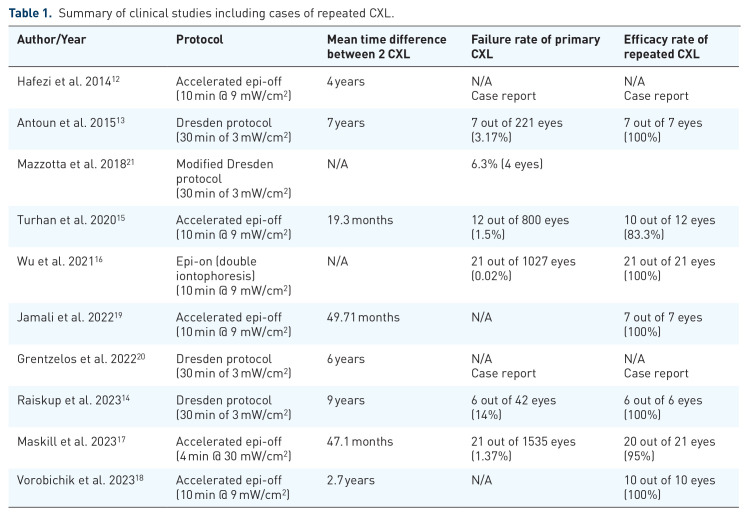反复角膜交联治疗进展性圆锥角膜的有效性和安全性。
IF 2.3
Q2 OPHTHALMOLOGY
Therapeutic Advances in Ophthalmology
Pub Date : 2025-06-28
eCollection Date: 2025-01-01
DOI:10.1177/25158414251350071
引用次数: 0
摘要
角膜交联(CXL)于2003年首次应用于临床。从那时起,该手术已被确立为治疗进展性圆锥角膜的一线治疗方法。在过去的几年里,出现了许多不同的方案,每一个都有不同的临床结果和安全性。原发性CXL后圆锥角膜的进展是非常罕见的,但在文献中有报道。本综述总结了原发性失败后重复CXL的现有数据,强调临床疗效和安全性。本文章由计算机程序翻译,如有差异,请以英文原文为准。


Repeated corneal crosslinking for progressive keratoconus: efficiency and safety.
Corneal crosslinking (CXL) was first introduced in clinical practice in 2003. Since then, this procedure has been established as the first-line treatment in the management of progressive keratoconus. Over the last years, many different protocols have emerged, each one of them with variable clinical outcomes and safety profile. Progression of keratoconus after primary CXL is very rare, but it has been reported in the literature. This review summarises the existing data on repeated CXL after primary failure, emphasising on clinical efficacy and safety.
求助全文
通过发布文献求助,成功后即可免费获取论文全文。
去求助
来源期刊

Therapeutic Advances in Ophthalmology
OPHTHALMOLOGY-
CiteScore
4.50
自引率
0.00%
发文量
44
审稿时长
12 weeks
 求助内容:
求助内容: 应助结果提醒方式:
应助结果提醒方式:


